Reliability Measure of a Relay Parallel System under Dependence Conditions ()
1. Introduction
As in Barlow and Proschan [1], a complex coherent reliability system is completely characterized by its structure function  assuming values in the set
assuming values in the set  and where
and where  is a stochastic process assuming values in
is a stochastic process assuming values in . The stochastic process
. The stochastic process , represents the state of the i-th component.
, represents the state of the i-th component.  if the component i is working at time t and
if the component i is working at time t and  i if the component i is in a failed state at time t. Also, the system state
i if the component i is in a failed state at time t. Also, the system state  has such an interpretation, is increasing in each coordinate and each component is relevant, that is, there is a time t and a configuration of
has such an interpretation, is increasing in each coordinate and each component is relevant, that is, there is a time t and a configuration of  in which the functioning of the component i is fundamental for the functioning of the system.
in which the functioning of the component i is fundamental for the functioning of the system.
A relay system is subject to two kinds of failure: failure to close and failure to open. Similarly, circuits construct from these relays are subject to the same kinds of failure. If the i-th relay responds correctly to a command to close,  (that is, closes), and
(that is, closes), and  otherwise, i = 1; 2 and
otherwise, i = 1; 2 and  if the circuit responds correctly to a command to close (that is, closes) if, and only if, at least one of its components responds correctly to a command to close, and 0 otherwise, then,
if the circuit responds correctly to a command to close (that is, closes) if, and only if, at least one of its components responds correctly to a command to close, and 0 otherwise, then,

is a parallel system. Next, let  if the i-th relay responds correctly to a command to open (that is open), and
if the i-th relay responds correctly to a command to open (that is open), and  otherwise, i = 1; 2. Let
otherwise, i = 1; 2. Let  if the circuit responds correctly to a command to open (that is, open), and 0 otherwise. Then
if the circuit responds correctly to a command to open (that is, open), and 0 otherwise. Then

a series system, the dual of , is the system representing the correct system response to a command to open.
, is the system representing the correct system response to a command to open.
Generally, given a structure function , its dual
, its dual 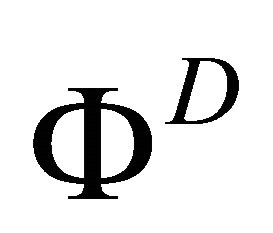 is defined by
is defined by

where
 .
.
The concept of dual structure is useful in analyzing system of components subject to two kinds of failures, such as relays system and safety monitoring systems. It is interesting and useful to note that both failure to close and failure to open can be analyzed using the same structure function . In this paper, under dependence conditions, we analyze the dual structure probability measure of a parallel system, through a transform of the failures counting processes compensators in the original probability space. In Section 2 we analyse the problem for a parallel system of two components. In Section 3 we generalize the results and in Section 4 we discuss some reliability preservation properties.
. In this paper, under dependence conditions, we analyze the dual structure probability measure of a parallel system, through a transform of the failures counting processes compensators in the original probability space. In Section 2 we analyse the problem for a parallel system of two components. In Section 3 we generalize the results and in Section 4 we discuss some reliability preservation properties.
Without loss of generality, firstly, we consider a parallel system of two components. We observe two component lifetimes T and S, which are positive random variables defined in a complete probability space through the family of sub
through the family of sub —algebras
—algebras 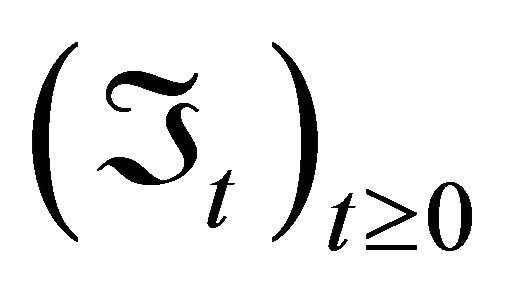 of
of , where
, where
 ,
,
 satisfies Dellacherie’s conditions.
satisfies Dellacherie’s conditions.
In order to simplify the notation, in this paper we assume that relations such as  between random variables and measurable sets, always hold with probability one. In what follows we assume that S and T are totally inaccessible
between random variables and measurable sets, always hold with probability one. In what follows we assume that S and T are totally inaccessible  -stopping time and that
-stopping time and that , that is, the lifetimes can be dependent but simultaneous failures are ruled out.
, that is, the lifetimes can be dependent but simultaneous failures are ruled out.
The parallel operation of S and T is defined by the maximum between S and T and denoted by

If we denote the survival functions of S and T as
 and
and  respectively, it follows from Arjas and Yashin [2], that, under some conditions, the
respectively, it follows from Arjas and Yashin [2], that, under some conditions, the  -compensator processes of
-compensator processes of  and
and  are given by
are given by

and
 .
.
We assume such conditions and as S and T are totally inaccessible-stopping time the compensator processes are continuous.
Now we calculate

and therefore, in the set  the
the  -compensator of
-compensator of  is
is

We intend to define compensator transformation of  and
and  to
to  and
and  in the way that the above expression is the sum
in the way that the above expression is the sum  which characterizes uniquely the lifetime of a series system and, therefore, the dual of such a parallel system. As this operation is symmetric on S and T, the idea is to combine compensator transformations in
which characterizes uniquely the lifetime of a series system and, therefore, the dual of such a parallel system. As this operation is symmetric on S and T, the idea is to combine compensator transformations in and
and .
.
Firstly, we consider the compensator transform

To prove the main Theorem of this section we are going to use the following Lemma:
Lemma 2.1
Under the above hypothesis the following process

is a nonnegative local  -martingale and
-martingale and 
Proof We consider the localization sequence, the  -stopping time defined By
-stopping time defined By

It is sufficient to prove that the process

is a bounded  -martingale.
-martingale.
For any  -stopping time
-stopping time  we can write
we can write

The procedure is easy: On the set  we have
we have

Otherwise, on the set ,
, 
As the integrand

is an  -predictable process and
-predictable process and  is an
is an  -martingale,
-martingale,  is an
is an  -martingale with
-martingale with

Secondly, we consider the compensator transform

and with the same argument to prove Lemma 2.1 we can prove Lemma 2.2:
Lemma 2.2 Under the above hypothesis the following process

 is a nonnegative
is a nonnegative -martingale with
-martingale with

Observe that the same expression for the  -compensator of
-compensator of  is obtained through the transformation:
is obtained through the transformation:

Then, we propose the compensator transforms:

and

to prove the main Theorem:
Theorem 2.3 Under the above hypothesis the following process

is a nonnegative local  -martingale and
-martingale and .
.
Proof. Using Lemma 2.1, Lemma 2.2 and the Stieltjes differentiation rule we have

As by assumption,  and
and  are continuous and
are continuous and  we have
we have

and therefore in an local
in an local  -martingale with
-martingale with  and the theorem is proved.
and the theorem is proved.
Now, we are looking for a probability measure Q, such that, under Q,  becomes the
becomes the  - compensator of
- compensator of  with respect to this modified probability measure.
with respect to this modified probability measure.
Under certain conditions, it is possible to find Q. Indeed, assume that the process  is uniformly integrable. Then it follows from well known results on point process martingales (Girsanov Theorem,Bremaud [3]) that the desired measure Q is given by the Radon Nikodyn derivative
is uniformly integrable. Then it follows from well known results on point process martingales (Girsanov Theorem,Bremaud [3]) that the desired measure Q is given by the Radon Nikodyn derivative

Remark:
In the case where T and S are identically distributed, we have  and the compensator transform is given by
and the compensator transform is given by

which is used in Bueno and Carmo [4], to de_ne active redundancy operation when the component and the spare are dependent but identically distributed.
Parallel operations are very important in reliability theory: the performance of a parallel system are always better than the performance of any coherent system with the same components; it is used in replacement models, to optimize system reliability through active redundancy. However, if the component are stochastically dependent the reliability of a coherent system is a difficult and tedious calculation involving multivariate distributions. The calculation becomes more tractable under the assumption of a series system, in which case the reliability is the survival function of a multivariate positive random vector. It is also can be easily done through the compensator processes. We can show this argument easily:
Corollary 2.4
Under the hypothesis of Theorem 2.3, and under Q such that
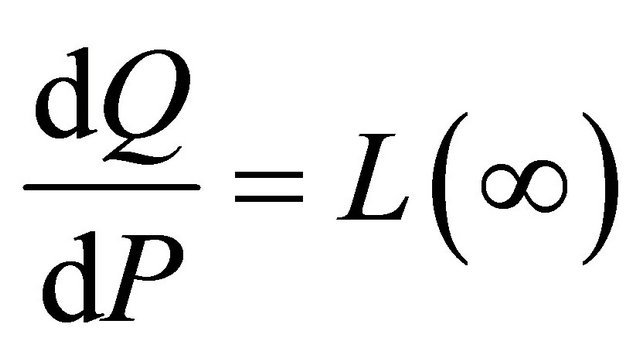 we have
we have

Proof As the compensators are deterministic before any failure, we can write:

As an application we calculate the Barlow and Proschan [1] reliability importance of a component for the system. In the independent and absolutely continuous case, it is the probability that the component causes the system failure. For dependent components, this quantity is

where 
This expression is an extension of the Barlow and Proschan reliability importance, by Bueno and Menezes [5] where the importance of the component S for the system is 
Now, we ask how we can use Corollary 2.4 to calculate the Barlow and Proscha relibility importance of component S for the system reliability. In a series representation we have:

In the above we use that

and

We expected such a relation since that the reliability of the dual system is  and the measure Q is relative to the random vector
and the measure Q is relative to the random vector  To clarify this argument, suppose that we can define the reverse times,
To clarify this argument, suppose that we can define the reverse times,  and
and  such that the events
such that the events  and
and  are equivalent to
are equivalent to  and
and  respectively, then
respectively, then

2. A General Parallel System
The structural relationship between the lifetime , of a parallel system and its components lifetime
, of a parallel system and its components lifetime  is given by
is given by

We intend to define a compensator transform to characterize the parallel system as a series system. As in Section 2, the idea is to combine compensator transformations on  the compensator process of the lifetime counting failure process
the compensator process of the lifetime counting failure process  of component
of component 
For  define the compensator transform
define the compensator transform
 where
where

and

Under the above hypothesis and notation we have

The main results, which follows from an adaptation of Girsanov Theorem, is
Theorem 3.1
Under the above hypothesis the following process

is a nonnegative  -martingale with
-martingale with 
Remarks:
1) We have

2) If the components are dependent but identically distributed, we have

and

Therefore

Remark:
As in Barlow and Proschan [1], we assume the series parallel decomposition of a coherent system:

where  are minimal cut sets, that is, a minimal set of components whose joint failure causes the system to fail.
are minimal cut sets, that is, a minimal set of components whose joint failure causes the system to fail.
We can also define, for each  the minimal parallel cut structure
the minimal parallel cut structure

and we can write

Therefore, using the compensator series transformation for each  we get the series transformation for the system.
we get the series transformation for the system.
3. Preservations Results
In many reliability situations, we encounter structures of coherent systems where components share a load, so that a failure of one component results in increased load on each of the remaining components. Furthermore, the components in a coherent system could be subjected to the same set of stress. In such cases, the random variables of interest are not independent but rather associated.
Therefore, it is very interesting to verify whether the association properties of the lifetimes  under P are preserved under Q.
under P are preserved under Q.
We introduce the association definition. For this we give the concept of an upper set in 
A Borel set  is called an upper set if for any
is called an upper set if for any  implies that
implies that . In the univariate case,
. In the univariate case,  is equal to either
is equal to either  or
or .
.
Definition 4.1
The random variables  (or the corresponding random vector
(or the corresponding random vector ) are associated, if for all upper sets
) are associated, if for all upper sets  and
and  of
of 

In particular, this definition, formulated by Esary, Proschan and Walkup [6], Esary and Proschan [7], is useful to produce upper and lower bounds for system reliability. The measure Q preserves this property from the measure P.
Theorem 4.2
If T is associated under , then also under
, then also under .
.
Proof
We consider the upper sets in ,
,  and
and , and the uniformly integrable
, and the uniformly integrable  -martingale,
-martingale,

and

It follows that there exists a unique  -predictable process, such that the covariance process
-predictable process, such that the covariance process  is increasing, right continuous, with
is increasing, right continuous, with  such that
such that

is an  -martingale.
-martingale.
Since a martingale has a constant expectation, we have

and
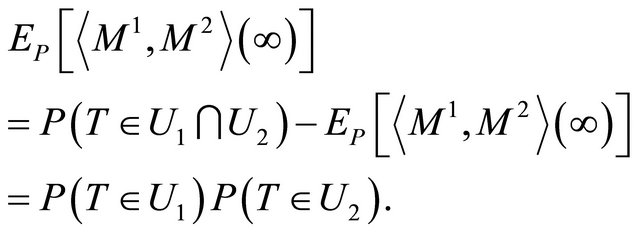
It follows that  is associated if, and only if,
is associated if, and only if,

Now,

for 
 a.s.
a.s.
Classes of non-parametric distributions , such as increasing ( decreasing) failure rate (IFR (DFR)) distributions, new better (worse) than used (NBU (NWU)) distributions and others, have been extensively investigated in Reliability Theory. They can be used to achieve the benefit of a maintenance operation or to derive bounds on system reliability.
Several extensions of these concepts appeared in the literature, e.g. Harris [8], Barlow and Proschan [3], Marshall [9] and others. However, they all have in common that they don’t order the lifetime vectors in the sense of stochastic order as the univariate concept does. Arjas [10], considered to observe the components, continuously in time, based on a family of sub s-algebras
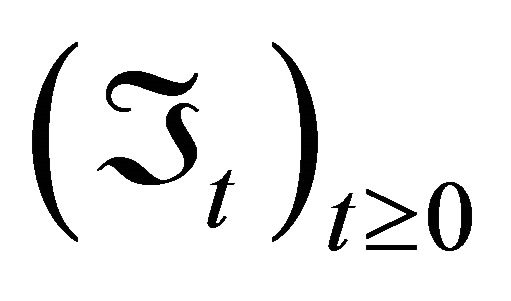 . Arjas, introduced the notion of increasing failure rate distribution (new better than used distribution) relative to
. Arjas, introduced the notion of increasing failure rate distribution (new better than used distribution) relative to  IFR
IFR , (NBU
, (NBU ) generalizing the conventional definition of IFR (NBU) and extending these classes into a multivariate form, denoted by MIFR
) generalizing the conventional definition of IFR (NBU) and extending these classes into a multivariate form, denoted by MIFR , (MNBU
, (MNBU ).
).
In order to introduce the concepts of Arjas [10], we define the residual lifetime of 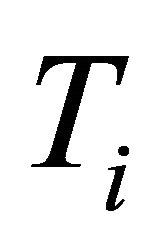 at time
at time  as
as

Let 
Definition 4.3
(Arjas, [10]) We say that  is multivariate increasing failure rate relative to
is multivariate increasing failure rate relative to  , denoted by MIFR
, denoted by MIFR , if for all
, if for all  and all open upper sets
and all open upper sets ,
,

Remark: Arjas [1] proved that the class of upper sets in the above definition can be restrict to the class , of finite unions of open upper sets with corner point
, of finite unions of open upper sets with corner point , where
, where  are positive rational numbers. An open upper set with corner point
are positive rational numbers. An open upper set with corner point
 is defined by
is defined by 
We want to prove that the MIFR class under
class under  is preserved under
is preserved under .
.
Theorem 4.4
If  is multivariate IFR relative to
is multivariate IFR relative to , under
, under , then also under
, then also under .
.
Proof First, we show that 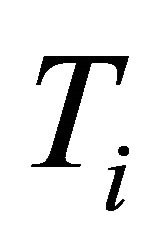 is IFR
is IFR , under
, under . By hypothesis, we have
. By hypothesis, we have

for all 
Now

However  is a measurable random variable and can be written as a suitable approximating step function
is a measurable random variable and can be written as a suitable approximating step function
 , where
, where  are constants and
are constants and  are measurable.
are measurable.
As , using the dominated convergence theorem we have
, using the dominated convergence theorem we have

which is decreasing by hypothesis.
Herefore  is IFR
is IFR under
under . In order to prove that the vector
. In order to prove that the vector  is increasing failure rate relative to
is increasing failure rate relative to  we use the relation
we use the relation

and the equivalent definition of MIFR in terms of the open upper sets with corner point as in the above remark.
in terms of the open upper sets with corner point as in the above remark.
As  is MIFR
is MIFR ,
,
 .
.
The proof follows as above.
4. Conclusions
Relay system are very concerned in reliability theory, however, such a modeling is complicated under stochastically dependence conditions. The purpose of this paper is to provide a way to work with this situation using a point process martingale approach.
Some preservation important results in association and non parametric distributions classes useful in reliability theory are proved and an application in component importance is analised.
5. Acknowledgments
This work was partially supported by FAPESP, Proc. No. 2010/52227-0.